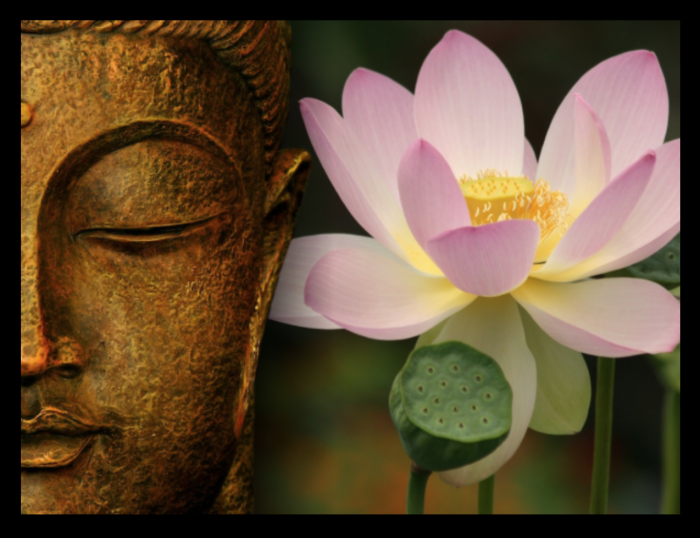The Sanskrit word bodhicitta points to the pure nature of the mind itself — a balance of emptiness and awareness, with compassion being the natural expression of this selfless mind.
“When you don’t have any solid self that you need to maintain and all your energy is used to fulfill others’ happiness—that kind of attitude is called bodhicitta”, notes teacher Tsonknyi Rinpoche.
In cultivating bodhicitta, or “awakening heart/mind”, our task is simply to get out of our own way and let our natural state of wisdom and compassion express itself.
When Buddhists speak of emptiness, a common misconception is that this equates to nothingness. Rather, emptiness is more akin to spaciousness. It points to the non-existence of a separate, independent self.
As Thich Nhat Hanh says, we inter-be. Teacher Joseph Goldstein notes, “The self is like a summer storm made up of many elements. A collection of changing mind-body elements.” As we cultivate wise attention in our mindfulness practice, we shift away from self-centeredness and toward the understanding that this is “the” pain, gain, and loss of life, rather than the self-identified “my.”
And here the seeds of compassion are watered.
Mindfulness practice inclines our mind toward spaciousness, as we deepen the neural grooves for “flow” mind—an effortless non-striving. As one example of how to cultivate spaciousness, teacher Ajahn Sumedho offers this instruction: “Notice the space around people. Look at the space around them rather than looking at them. This is a way of beginning to open oneself. When one has a spacious mind, then there is room for everything.”
The true nature of mind is bodhicitta— empty, radiant, and responsive to the world around us. This is not a pie-in-the-sky, inaccessible state. This state is here right now, yet often obscured by the ego’s habit of craving and aversion. Mindfulness is a process of lifting the veil as we relax the mind and begin to experience the freedom that is our natural state.
Joseph Goldstein offers an ice and water analogy. Imagine ice is the contracted, identified, and rigid self which is lost in experience and thought, and water the non-fixated, flowing, flexible nature of awareness itself. As we deepen our mindfulness practice, our mind becomes like water, responsive to the world and to others’ needs. Yet ice and water are actually of the same fundamental nature — ice is simply frozen water, and water is melted ice. That said, though of the same nature, they are experienced quite differently.
The fundamental nature of our mind is unchanging—yet with practice, we alter its state to a more flexible, responsive, and free form.
 Share on bsky
Share on bsky






Read 0 comments and reply